Text
What Makes Popular Music Popular?
In contemporary society, there exists a general consensus on what constitutes as popular music. It’s a definition that is hard to articulate, but it’s there. It is music that is, well, popular, for lack of a better word. But this word itself is actually very nuanced. It encapsulates many subtle complexities that are easy to overlook, yet hard to pinpoint.
What exactly makes popular music popular? Is it the sheer ubiquity of music that is characteristic of the modern era? Or is it something deeper, lurking in some meaning within the music itself? These two possibilities represent two generally competing schools of thought. The former suggests that popular music is more of a passive entity, existing for mere consumption. It is inescapable – present and available in almost every wake of life – and this is why popular music is popular. The latter, on the other hand, suggests that popular music is capable of holding some deeply-rooted meaning that artists intentionally weave into their works. Here, the music exists to be actively engaged with by listeners, and this is why popular music is popular.
After some careful observation, however, there’s nothing to say that these two possibilities must be mutually distinct. It need not be one precise, distinct cause. Rather, it can be a combination of numerous, intricate influences that combine to make popular music popular.
Music — Anytime, Anywhere
In the modern age, music can be summarized by a two-word catchphrase: “Anytime, Anywhere.” In fact, this phrase is one that is discussed at length in Gopinath and Stanyek’s 2014 journal in The Oxford Handbook of Mobile Music Studies. In this piece, they state that the expression “accurately describes—as well as prescribes—an ideology of immediate and ubiquitous access to music, and its consistent appearance…lends credence (and continuity) to the notion of a ‘mobile music century’” (p. 15).

This ubiquitous characteristic of modern popular is almost indisputable. It has been made possible by a staggering array of contributing factors, two of which will be explored here (namely, streaming and advertising). And while it will be easy to discern that popular music is indeed ubiquitous, it will be a much more difficult task to determine whether or not this ubiquity is why music is popular. In other words, it’s clearly apparent that the two have a relationship, but it is not necessarily one of cause-effect.
The first factor that perpetuates the pervasiveness of popular music in modern society is the adoption of streaming as the main form of listening. Streaming has allowed music to permeate society even further than was previously possible; it has become the new and primary way we listen to music. No artist better embodies this statement than Chance the Rapper.

Chance the Rapper – one of the most prominent rappers in current day hip hop – is an independent artist who has never been signed to a record. A Rolling Stone article by Sarah Grant calls him “the most successful independent artist in popular music,” who “balks at the very idea” of signing to a record label. In fact, one of Chance’s defining characteristics is that he offers his music exclusively through means of streaming, in order to keep it free (or as free as possible). And yet, despite this fact, he has been a wildly successful artist.
Case in point, Chance the Rapper was the only artist to submit a streaming-only album for Grammy consideration in 2017, when he submitted his mixtape “Coloring Book” for Best Rap Album. He was up against moguls such as Drake, Kanye West, De La Soul, and DJ Khaled, all of whom had albums backed by recording labels. In face of this seemingly large adversity, Chance won the Grammy. And although it might not seem like it, this actually indicates a very significant turning point in the way that popular music exists in the modern day.
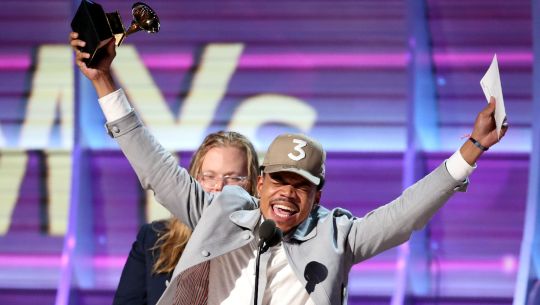
First, it is noteworthy that the Grammys even allowed nominations for streaming-only projects. 2017 marked the first year that such nominations were permitted. Seeing that the Grammys are frequently criticized for being an archaic institution, their recognition of this new form of music production is markedly significant. Moreover, it is incredibly remarkable that Chance the Rapper was able to defeat the record-signed Goliaths in his category. This likely would not have been possible even a decade ago. The win was largely in part due to the noticeable shift in society towards streaming. It placed Chance the Rapper – a man whose success is entirely based on streams – up there with the biggest names in the industry.
This attests to the fact that streaming truly is the new that way we listen to music, as well as the new way that artists distribute their music. Starr and Waterman even comment on this trend, stating that “a new generation of artists have moved to cut out the middleman in an effort to reach their audience directly without the mediation of record companies” (p. 557).

But how does streaming, as the main method of music consumption and production, contribute to the popularity of music? Does it contribute at all? Well, it certainly does contribute to the pervasiveness of music. Streaming liberates listeners from both physical and economic constraints that are often times a hinderance with “physical” music (e.g., records or CDs). For example, to listen to music with a record or CD, the appropriate music player must be physically present, which is inherently less portable than, say, a cell phone. And to possess the music in the first place, a somewhat cumbersome fee must be paid upfront: somewhere between $10 and $15 for the roughly twelve tracks that come with an album.
On the other hand, through streaming, music can be played anywhere with an Internet connection. And the only economic barrier that might exist with streaming is a subscription fee to some service such as Apple Music or Spotify. However, this fee is usually optional, to add additional features (such as no ads and unlimited song skips). But – and this is the important part – any fee paid always provides access to unlimited music. This is obviously not the case with a purchased CD. This means that, with streaming, popular music has much higher availability and mobility. Audiences can listen to whatever music they so choose, anytime, anywhere.
So, does this, in effect, make popular music popular? Before performing this analysis, it is important to introduce a second factor that contributes to the pervasiveness of popular music: advertising. In the 21st century, popular music has become increasingly integrated with advertising. To quantify this scenario, David Huron in his article “Music in Advertising: An Analytic Paradigm” presents the fact that “of the estimated sixty billion broadcast advertising hours encountered by North Americans each year, approximately three-quarters employ music in some manner.”
Composer and musician Ben Neill is even so bold as to claim that “there is no difference between something that is considered art and something that is a commercial” (p. 238). To him, there is no difference between the art and the commerce of a song in advertising. Whether or not this is completely the truth, music and advertising clearly go hand in hand. One such example of this is Feist’s song “1234” appearing in a commercial for Apple’s iPod Nano.
youtube
The ad obviously utilizes the song to promote a product. However, something less conspicuous also occurs: the product in turn promotes the song. There is reciprocal, symbiotic relationship at play.
“1234” went on to be Grammy nominated for Best Female Pop Vocal Performance. Feist herself was even surprised by the impact that the ad had on the song’s popularity. She once told BBC News, “it did me nothing but favors because I’ve continued doing what I do, but with so many new open ears from so many more people than there were before.” And therein lies the critical point: advertising provides yet another medium for music to proliferate.
This begs the question, because popular music is so ubiquitous, is this what makes it popular? There exists the possibility that, through means such as streaming and advertising, popular music inundates our everyday life. We are surrounded by it. And there is no real underlying interaction between listener and song, because rather than us seeking the music out, the music seeks us out. We now forego the step where we ourselves must work to discover music that provides cognitive stimulation or emotional value, because it is no longer necessary. We can listen to any music, anytime, anywhere.
If the above situation is true, then the music that is popular is that which finds us. It is whichever songs find themselves on the airwaves of streaming services and the television screens through thirty second commercials.
In my opinion, however, this is not wholly the case. I do think that sonic ubiquity plays a role in making popular music popular. However, it is merely the first step. It provides the possibility for music to be popular; it serves as the platform upon which music can proliferate, and it leads to the possibility of engagement with listeners. I argue that this engagement is actually what makes popular music popular. Exactly how this occurs is explored in the following section.
Music with Meaning – Identities and Values
It is the undeniable ubiquity of modern music that provides the opportunity for music to become popular. But for music to actually be popular, there must be something within the music itself – some deeper meaning hidden in the songs that surround us. And by discovering this more profound layer in the music, listeners can develop a sense of connection, establishing a personal significance to the song. Artists achieve this by appealing to, and even creating, identities from their audiences that hold specific values. The moment that audiences develop a personal relationship with some message or other significance that they uncover in the song, the music becomes popular.
One example of an artist who accomplishes just this is Lady Gaga. Lady Gaga has defined what it means to be a female artist in the 21st century. In her journey to fame, her biggest obstacle has been facing pressures to act a certain way that is considered “female.” Through her journey, Gaga has identified with certain marginalized audiences in a special way, preaching values that her story and her music embodies.

Gaga is a fiery spirit who speaks her mind. She remains true to herself. She is not afraid to break boundaries. These are all qualities that, through her music, she can communicate to listeners, particularly female ones. Her documentary entitled “Gaga: Five Foot Two” details many of her struggles as a female artist. When speaking on being a woman in the modern music industry, she recounts how difficult it can be to deal with men of power. As she states in her own words, “those men have so much power that they can have women in a way that no other men can.”
Gaga has retaliated against these aggressions from the male-dominated industry by crafting a rebellious image and, more importantly, portraying her carefree and self-liberating ideals through her songs. In her same documentary, Gaga states that “when they wanted me to be sexy, when they wanted me to be pop, I always fuckin’ put some absurd spin on it to make me feel like I still was in control.” She doesn’t care what men think about her. She is unapologetically herself – independent and happy – which can be seen in her work.

For example, her 2011 hit song “Born This Way” conveys a message of self-love and freedom to her listeners, no matter who they are. This extends her appeal beyond her typical female audiences, reaching out to the LGBTQ community as well, as she preaches that people of all gender and sexual identities are equally justified in loving themselves. For example, the opening lines of the first verse directly address her own womanhood:
“My mama told me when I was young
We are all born superstars
She rolled my hair and put my lipstick on
In the glass of her boudoir
‘There's nothing wrong with loving who you are’”
Later in the song, Gaga includes lyrics that appeals to audiences that are often marginalized for their sexual identities:
“No matter gay, straight or bi
Lesbian, transgendered life
I’m on the right track, baby
I was born to survive”
youtube
“Born This Way” is an exemplary example of how popular music artists appeal to specific demographics, which in turns makes their music popular. The values and messages in Lady Gaga’s songs directly seek out young female (and queer) audiences, who might be struggling to find an identity for themselves in a society that places rigid standards on what is acceptable. If one of these listeners hears Gaga’s music and is able to personally relate to the hidden struggles or engage with the underlying messages, then they create an intimate, personal connection with that music. They either identify with the identity that Gaga has created, to the values that her songs preach, or to both. Whatever the reason, to them, the song now holds a special meaning. And this is what makes her music popular.
Another artist who accomplishes a similar feat is Kendrick Lamar. Kendrick, as a prolific modern-day rapper, plays a huge role in promoting certain ideals concerning race. He has a very prominent role in the hip-hop world, and he uses his position to express values that he holds to high regard. Particularly, through his music, Kendrick has established an important relationship with African American audiences. His music often focuses on topics centered around his observations on race relations in America. And because he is able to produce music with which his listeners can actively engage, his music is undoubtedly popular.

His song “The Blacker the Berry” released in 2015 is perhaps the most poignant manifestation of this. In this song, Kendrick boldly voices his uncensored opinions about racial injustices that he feels pervades society. Through the lyrics, he explores just what it means to be black in today’s America. His lyrics are charged, for example:
“This plot is bigger than me, it's generational hatred
It's genocism, it's grimy, little justification
I'm African-American, I'm African
I'm black as the heart of a fuckin' Aryan
I'm black as the name of Tyrone and Darius
Excuse my French but fuck you — no, fuck y'all
That's as blunt as it gets, I know you hate me, don't you?
You hate my people, I can tell cause it's threats when I see you”
But not only does he express his viewpoints on what he sees as prejudice from whites to blacks, he also proposes a hypocritical condition that he notices in black America:
“So why did I weep when Trayvon Martin was in the street when gang banging make me kill a nigga blacker than me?
Hypocrite!”
youtube
This song is obviously very profound in its message. However it is to be interpreted is up to the individual listener, but the main point lies in the fact that this song actually engages the listener on a personal basis, formulating a connection and giving the song meaning.
In an interview with MTV news, Kendrick shrewdly observes that people think “it’s just talk and it’s just rap. No, these are my experiences.” Kendrick himself knows that his music is more than just a sequence of notes and accompanying lyrics; they actually have profound implications. And by articulating his own personal values – especially those concerning race – in his music, Kendrick creates and then subsequently preaches to an identity out of his audiences. He breaks through the barrier between song consumer and song producer, relating to the listener’s own thoughts and experiences. Consequently, the listener associates the song with a deeper meaning. And this crucial step is what makes the music popular.
This theme, exemplified by Lady Gaga’s appeal to gender and Kendrick Lamar’s appeal to race, is one that is true of the entire popular music industry. Artists must be able to either find or create distinct audiences, and then relate to those audiences’ values, in order for their music to be truly popular. It is also important to note that these identities and values need not be as serious as discussed herein. They can be silly, superficial, or simplistic. But that does not make it any less profound to the listener – it still achieves the same goal of establishing a connection and thus attaining popularity.
Modern-day music listeners are surrounded by music. As explored earlier, music is anytime, anywhere. The intrinsic ubiquity of modern music is imperative, in that it serves as the platform upon which songs can attain their full potential in reaching as many listeners’ ears as possible. But this is not actually what makes the music popular. It is the subsequent consumer-engagement that does. Just because millions of people hear a song does not make it popular – the song can be consumed completely passively, without the listener even realizing that they are consuming it. But once this listener unearths some deeper meaning and forms a personal relationship to the song, the game changes. That music is now popular, in every sense of the word.
Sources and Course Materials
Grant, Sarah. 2017. What Chance the Rapper’s Streaming-Only Grammy Nod Means for Pop’s Future. Rolling Stone.
Huron, David. 1989. Music in Advertising: An Analytic Paradigm. Musical Quarterly.
Markman, Rob. 2015. Kendrick Lamar has Strong Words for his ‘Blacker the Berry’ Critics. MTV News.
NME. 2008. Feist: ‘I was naïve about ‘1234’ iPod Nano advert. NME Audio.
Starr, L. & C. Waterman. 2013. American Popular Music: from minstrelsy to MP3. New York: Oxford University Press.
Taylor, Timothy D. 2013. The Sounds of Capitalism: Advertising, Music, and the Conquest of Culture. Chicago Scholarship Online.
0 notes
Text
The Ever Elusive Frank Ocean
Frank Ocean — a man of mystery and intrigue.

When it comes to Frank and the notion of popular music, it is impossible to dismiss the paradox at play. He is one of the most widely-regarded singer-songwriters in present-day R&B, hip hop, and rap. His first studio album, Channel Orange, debuted at number two on the US Billboard 200. His second studio album, Blonde, debuted at number one. He has received seven Grammy nominations, two of which he has won. He has received a number of other accolades, including the GQ Award for Rookie of the Year, the Soul Train Music Award for Album of the Year (Channel Orange), and the UK Music Video Award for Best Urban Video (“Novacane”). The list goes on.
Yet, amidst all of the critical acclaim, he remains an enigma.
Ghostly Beginnings
Frank began his musical career in quite literally the most secretive manner possible — as a ghostwriter. He moved to Los Angeles in 2005 after Hurricane Katrina destroyed his hometown, New Orleans, and rendered his local recording studio useless. Once in L.A., he began songwriting for hit artists, including Justin Bieber, John Legend, and Beyonce (with whom he is pictured below).

At this point in his career, Frank actually hoped to move more into the spotlight. As he stated in a 2012 interview with BBC News, "it might have been comfy to continue to [compose for other people] and enjoy that income stream and the anonymity. But that's not why I moved away from school and away from family."
This seems like the typical attitude of any musician trying to make it as a popular musician. Frank Ocean had a goal to rise to prominence as a solo artist, and it was one that he would undoubtedly achieve.
Frank’s Fame
In 2011, Frank dropped his first mixtape, Nostalgia, Ultra, to wide acclaim. The name “Frank Ocean” was now well-known in the music industry. He caught the attention of Jay-Z and Kanye West as they were creating their collaborative album, Watch the Throne. In 2011, Frank co-wrote and featured vocals on two songs in the album, “Made in America” and “No Church in the Wild.” The latter won him a Grammy Award for Best Rap/Sung Collaboration.
Then, in 2012, Frank released Channel Orange, his first studio album. It would be a gross understatement to say that this album was a success. After the album’s release, anyone paying even remote attention to R&B and hip hop respected the talent of Frank Ocean. Its hit single, “Thinkin Bout You,” was Grammy nominated for Record of the Year. The album itself was nominated for Album of the Year and Best Urban Contemporary Album, the latter of which he won. He even performed at the show, further propelling himself into the spotlight.
vimeo
It’s safe to say that 2011 and 2012 were great to Frank Ocean. A quick rise to stardom. A young, talented artist positioned in the limelight. He seemed to be right where he was dreaming to be just a few years earlier. In early 2013, Frank announced that he had began work on a new album. And then….
Where is Frank?
From 2013 until 2016, Frank Ocean almost entirely detached himself from the public sphere. During the three year stint, he remained in contact with the rest of the world through cryptic breadcrumbs, mostly through his Tumblr blog, where he could comfortably hide behind the veil of the Internet. Frank’s emotional and mental well-being were of great concern to the world he left behind. And the album that he promised in 2013? There was constant, fervent speculation on the release date. And as Frank’s exile drew on, there was speculation if that release date would ever actually come. It was a heart-wrenching time to be a Frank Ocean fan.

In the few months right before what would be the release of his second studio album Blonde, it was almost as if Frank was taunting his fans. In early July of 2016, he cryptically posted a photo on his website that indirectly hinted at a release that month. The photo is of a “Date Due” library card with several stamped dates, ending with “Jul 2016.” There was no further explanation from Frank accompanying the photo. But Frank Ocean was gone for years, and maybe, just maybe, he was about to make his long awaited return.

But alas, July painfully passed by in silence. Still no album. Then, on August 1st, another puzzling hint is released. At 3am, a live stream of Frank Ocean appeared on boysdontcry.co. The scenes are what can only be described as mysteriously random. Frank does some woodworking and plays some instruments. News outlets took this tease and ran with it, rumoring that August 5th would be the highly-anticipated release date of the album.
It is now August 6th, and there is still no album. Anguish. No word from Frank — not terribly surprising at this point. The internet is now on the verge of implosion. Everyone is shouting into the abyss, “Where’s the album Frank??” The waiting game ensued.


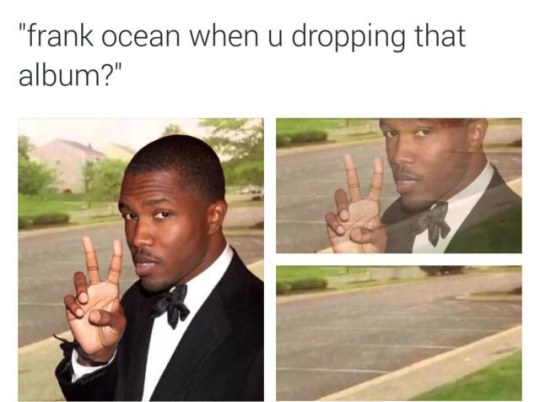
And then, on August 20th, 2016, Frank Ocean’s long-awaited second studio album materialized in the masterpiece that is Blonde. Fans lost their minds. Happy tears streamed down the face of the Internet as they tasted the sweet, sweet taste of blissful victory. The void that was missing was now filled with seventeen raw, beautiful tracks. Blonde rocketed to number one on charts across the world and sold 232,000 copies it its first week. The album is revered as Frank’s best work to date and is still being played on repeat by music fans everywhere.
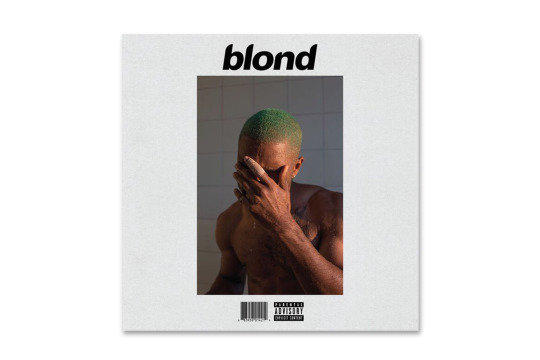
Dealing with Fame
The emotional roller coaster that is Frank Ocean’s career sheds light on his relationship with popularity in the music industry. He began as anonymous. He quickly became famous. He then promptly disappeared. He finally resurfaced, but as obscure and cryptic as ever. The promotion of his album was almost non-existent, with no direct communication from the artist himself. Frank, whether intentionally or not, put his highly devoted fans through emotional distress as they sat in agony suffering delay after delay.
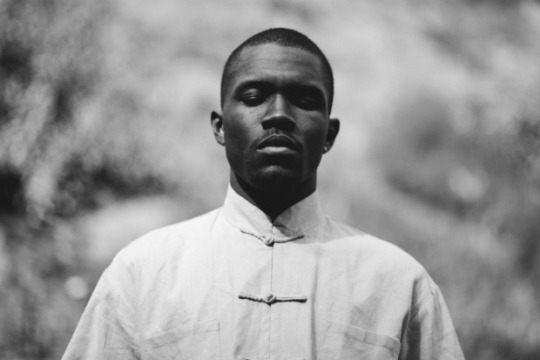
And yet, his fans remained loyal. His popularity surged even higher. Some might be quick to assume that Frank Ocean turned into an enigma with intent — that his three-year exile, as well as Blonde’s perpetual delays, were nothing more than a tactful business move. It’s easy to imagine an artist reveling in the air of mystery that they curated, conjuring up a mystifying hype around their celebrity image. Leading up to Blonde’s release, he had the public tantalized and hanging on his every move. If it was a purposeful business decision, then it certainly worked.
However, there is a much more believable argument that this is not the case for Frank Ocean — that he is not a PR mastermind, but rather an introspective, brooding soul who truly longs for a life outside of the public eye. When asked in an interview with the New York Times about his elusive three year escape, Frank comments, “I always thought about it like, if your house is on fire, you need to get out of the house.” He was evidently battling demons in both his personal and professional lives.
In the same interview, Frank remarks that he is “super-envious” of how Daft Punk is able to be famous yet retain their anonymity. He seems sad about the fact that he cannot do the same, remarking that “it’s too late” for himself. In resignation, he states that he’s “gotten used to being Frank Ocean.”

Other evidence points to his struggle in coming to terms with being a part of popular music. He didn’t submit Blonde for the 2016 Grammy Awards, or even attend the show, claiming in his New York Times interview that the “infrastructure of the awarding system and the nomination system … is dated.” In the same interview, Frank Ocean describes the pressure he felt to participate in that exact same system as a budding young artist four years earlier. His hope in attending and performing at the Grammys was to “[rub] shoulders with those people and [be] seen at those places.”
It would be wrong to blame Frank for changing his mind on how actively to participate in the public arena at different points in his career. If anything, it seems natural. It is common among celebrities to deter from the spotlight once they get a taste of how intrusive it truly is. Maybe the grass really is greener, and every artist needs to experience that turmoil personally.
In Frank Ocean’s perfect world, his music would be popular, and he would be nameless.
Sexuality and Gender
Perhaps one of the most defining aspects of Frank’s career is his relationship to gender and sexuality. Before Frank Ocean had his breakthrough as a solo artist, he was a member of the hip hop collective Odd Future starting in 2009. Odd Future is a group of rappers and hip hop artists with a loud, rambunctious demeanor. Their songs are ridden with offensive and homophobic lyrics. Frank was in stark contrast to the other members of Odd Future. Firstly, he is considerably more quiet and reserved than the other more aggressive members. Secondly, and much more striking, Frank Ocean is not straight.
He shocked the hip hop world when he came out as bisexual in 2012 through a letter posted on his Tumblr. In the heartfelt letter, Frank recounts his first love with a man when he was nineteen years old. He goes on to describe his struggle in coming to terms with his sexuality. But he ends the letter with the poignant sentence, “I feel like a free man,” indicating that he is finally at peace with this part of his life.

Frank’s coming out to the public made headlines. A bisexual R&B/hip hop artist is almost unheard of, but his announcement was widely met with love and acceptance. And how did his collaborators from Odd Future, who’s songs frequently feature homophobic slurs, feel about Frank’s sexual orientation? They publicly stated that they had absolutely no problem with it. Perhaps a more important question to explore is why Frank would target himself with his own discography.
This is a seemingly hypocritical theme that permeates the rap and hip hop industry: to preach acceptance but produce (and profit from) hate. Perhaps it ties back into the reasons why Frank was behaving the way he was early in his career. He was simply doing whatever would make him a successful musician. It just so happens that he was working in an industry where certain homophobic lyrics sell.
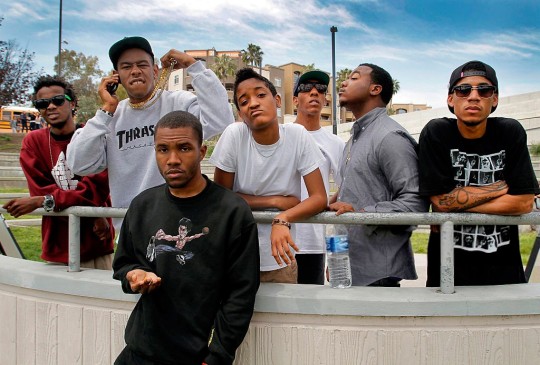
But as his fame progressed, Frank Ocean moved away from the homophobia. In fact, he starting doing the exact opposite. He began utilizing his prominent position in the business to explore gender through his work in a number of ways.
His songs about love and lust heavily feature the male pronoun. For example, in “Thinkin Bout You,” he sings: “My eyes don't shed tears, but boy, they bawl when I'm thinkin' 'bout you.” And in “Bad Religion,” he sings: “I can never make him love me / Never make him love me.”
More directly, the “Nikes” music video features Frank Ocean in heavy eye makeup and includes many shots of androgynous and cross-dressing men.
vimeo
Frank is certainly one to push the traditional boundaries of gender and sexuality. The fact that he can successfully test these boundaries and remain one of the top players in the industry is no small feat. These artistic expressions regarding gender are not quite as aggressive as pushing a political agenda. Instead, it appears as if he is defining exactly what it means to be a non-heterosexual male in R&B/hip hop popular music.
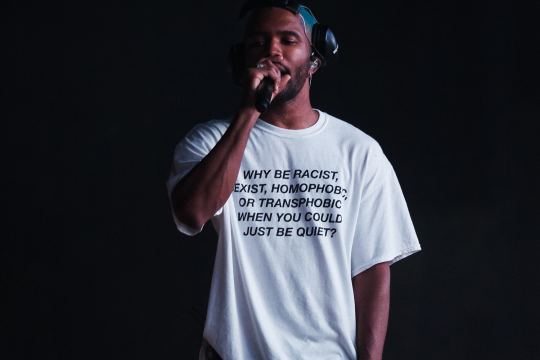
Frank Ocean is an enigma in more ways than one. After struggling with his rise to fame and popularity, he remains cryptic and mysterious to this date. But his ever-resilient fan base attests to his tremendous ability as a popular musician, in every sense of the word.
References
http://www.bbc.com/news/entertainment-arts-16390456
http://blog.promolta.com/frank-ocean-got-music-industry/
http://www.complex.com/music/2011/03/who-is-frank-ocean/beyonce
https://www.nytimes.com/2016/11/20/arts/music/frank-ocean-blonde-interview.html
https://blonded.co/blogs/posts/late
http://fnewsmagazine.com/2017/10/a-year-with-frank-oceans-blonde/
http://frankocean.tumblr.com/image/26473798723
https://blonded.co/blogs/posts/late
https://medium.com/cuepoint/find-your-wings-frank-ocean-and-odd-futures-pursuit-of-freedom-dda7214b5a84
https://vimeo.com/179791907
0 notes